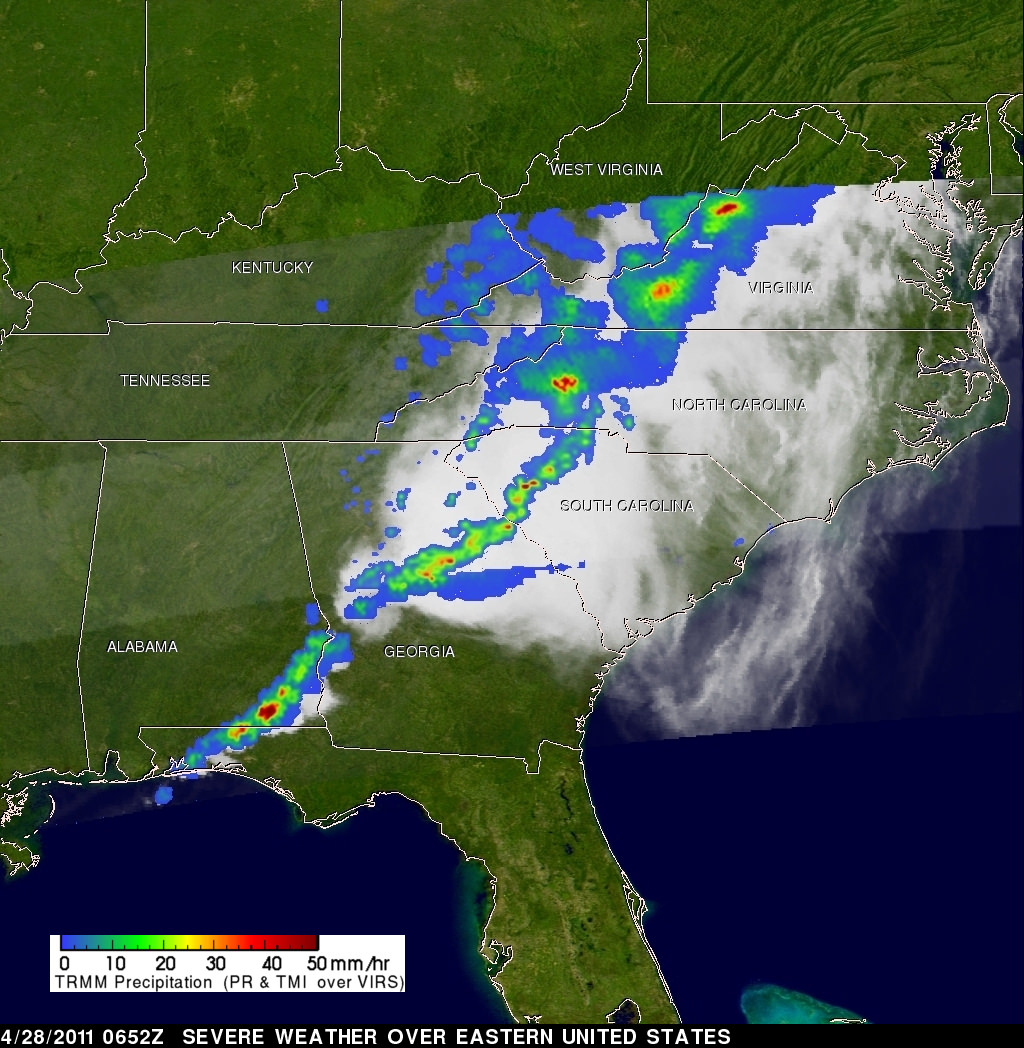[/caption]
NASA's Tropical Rainfall Measuring Mission (TRMM) satellite captured 3-D images of severe thunderstorms that were spawning tornadoes over the eastern United States on April 28, detecting massive thunderstorms and very heavy rainfall. Tornadoes associated with this extremely unstable weather left at least 202 dead across the Eastern U.S, with injuries numbering over a thousand.
[caption id="attachment_85246" align="aligncenter" width="566" caption="The Tropical Rainfall Measuring Mission satellite captured the rainfall rates occurring in the line of thunderstorms associated with a powerful cold front moving through the eastern U.S. on April 28, 2011. The yellow and green areas indicate moderate rainfall between .78 to 1.57 inches per hour. The very small red areas are heavy rainfall at almost 2 inches (50 mm) per hour. Credit: NASA/SSAI, Hal Pierce"]
[/caption]
TRMM flew over the strong cold front and captured data at 0652 UTC (2:52 AM EDT) on April 28, 2011. Most of the rainfall was occurring at moderate rates however, there were pockets of very heavy rainfall in Virginia, North Carolina, South Carolina, Georgia and Alabama where rain was falling at a rate of 2 inches (50 millimeters) per hour.
[caption id="attachment_85245" align="aligncenter" width="580" caption="This TRMM radar vertical cross section shows that some of these violent storms reached to incredible heights of almost 17 km (~10.6 miles). Credit: NASA/SSAI, Hal Pierce"]
[/caption]
In the image above and the lead animation, TRMM data was used to generate a 3-D look at the storm. TRMM's Precipitation Radar (PR) data was used by Hal Pierce of SSAI at NASA's Goddard Space Flight Center in Greenbelt, Md. to create a 3-D structure of those storms. The image Pierce created is a TRMM radar vertical cross section that shows some of these violent storms reached to incredible heights of almost 17 km (~10.6 miles).
TRMM, is the Energizer Bunny of satellites as it keeps going and going. It was launched in 1997 and was scheduled at one time to be decommissioned in 2004. But its systems keep operating and it is has been able to keep gathering useful information on storms and climate. It now has operated well over a decade past its original life expectancy.
TRMM is managed by both NASA and the Japanese Space Agency.
Source:
NASA
 Universe Today
Universe Today
